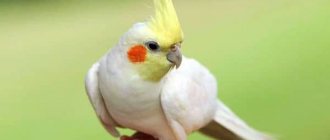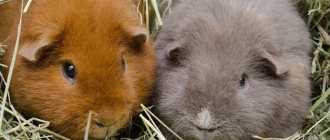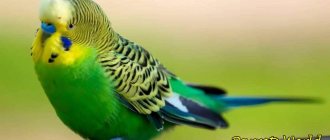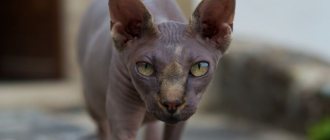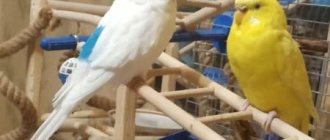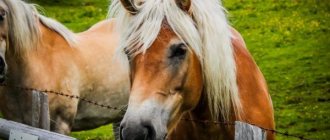Sometimes, when purchasing a feathered pet, we, fascinated by the beauty and talent of the parrot, forget to ask the seller about its life expectancy. And when they buy a chick, they mistakenly believe that it will please the eye for many, many years. However, the life expectancy of parrots depends on what species it belongs to. Thus, some parrots can boast of their longevity among other birds; their average age reaches 35 years. Other species of parrots have a maximum lifespan of 15 years.
The African gray parrot, also known as the gray parrot, is one of the most common species among lovers of large bird species. And for good reason! This unique bird has many talents, while possessing fairly well-developed mental abilities.
This particular type of parrot has a fairly high life expectancy. Currently, the maximum and at the same time unique age of the gray parrot has been recorded, which is 49 years (according to the British scientific journal “International Zoo Yearbook”).
How long do gray parrots live in the wild?
Observing a specific bird in the wild is an incredibly difficult task, which is why the range of grays' lifespans is wide. Some sources call 30 years, others - 60. However, more realistic data is no more than 23 years.
Many factors contribute to a significant reduction in the life of Grays in the natural environment:
- Poor food.
- Predator attack.
- Shooting parrots.
- Poaching.
If the year is lean, birds have to travel long distances in search of food. And even if they find something to profit from, they will have to defend the food in front of their fellow tribesmen.
There are no natural enemies in nature that regularly go hunting for parrots, but this does not mean that no one attacks these birds. The greatest danger to African Grays is represented by palm vultures (eagles). True, they do not attack parrots for food; rather, they defend their territory (nest and feeding area) from these noisy and scandalous birds.
The Gray's main enemy is man. Due to devastating raids on farms, many classify these birds as pests and shoot them with guns.
Despite the official ban on capturing gray grays, poaching on the African continent is rampant. The local population considers parrot meat a delicacy, and some tourists are not averse to eating it.
Feathers are used for decorative purposes and for rituals.
The chicks are taken from their parents and transported to port cities for sale to lovers of these intelligent birds. But before the birds get to their new owners, they are often kept in terrible conditions: in cramped conditions, with poor food and water (or even lack thereof), and complete unsanitary conditions. Of course, these factors have a negative impact on how long a Gray Gray will live with its new owner.
Wild birds purchased at the poultry market may already be emaciated and sick, and have also experienced terrible stress during transportation. All this seriously complicates the taming and adaptation of such a parrot to new conditions.
Gray's intelligence
Like most parrots, Grays have the ability to “talk.” However, in comparison with other species, it wins by a huge advantage. An African can not only remember and clearly reproduce several hundred words and phrases, but also use them appropriately. If other parrots only repeat (imitate) what they hear, then the gray parrot knows how to conduct a dialogue with a person and is open to new knowledge.
Did you know? In America, a domesticated Gray named Baby assisted the police in catching criminals - he remembered the names of the robbers who entered the apartment and named them to law enforcement officers.
A smart bird needs constant training. You can endlessly be amazed at the intellectual abilities and physical capabilities of the Gray, especially if you raise your feathered pet correctly. This is not difficult to do, given that a gifted “student” responds with interest to educational games and copes with the assigned tasks.
The gray parrot is not a gift bird at all. The Gray's character has such traits as irritability, rancor, and jealousy. He tries to dominate, but, having received a rebuff, does not rest on this. He chooses a “favorite” in the family and follows him everywhere, participates and helps in all matters.
How to increase the lifespan of a parrot
In fact, to increase the life expectancy of a Gray Gray, not much needs to be done:
- Provide complete and varied nutrition with fresh foods and high-quality feed (pumpkin seeds, various types of millet, millet, oat grains, fresh vegetables, fruits, berries, herbs, twig food, sometimes cereal sprouts, nuts, cottage cheese, eggs, various mineral and vitamin supplements ).
- Keep the Gray in a warm and bright room, but not in direct sunlight or in drafts.
- Organize a spacious cage for your pet - an apartment with the necessary equipment (feeders, drinking bowl, perches, various toys);
- Carry out hygiene procedures regularly: bathe the parrot with a spray bottle, in the shower, give it the opportunity to splash around in special bathing suits or baths, plus wash and disinfect the cage with all its contents;
- Do not make noise in the room with the parrot - sharp sounds and screams can cause severe stress in such a sensitive bird.
- Protect your pet as much as possible from communication with other pets, no matter how friendly they show each other. For a bird, sometimes a blow with a paw made a little stronger than usual is enough to cause death.
- Spend as much time as possible with your pet. This is extremely important for Grays. They really appreciate attention from their owners. These birds are capricious and obstinate, but very loyal to their beloved owner. In the family, they choose one favorite and treat the rest as good friends.
How many years does a gray parrot live in such comfortable conditions? As long as possible and, most importantly, with high quality. It is quite possible that your pet will be talked about in the future as a long-liver if you can create good living conditions for him and surround him with love.
What factors can influence the lifespan of a Gray?
The lifespan of a Gray Gray in captivity largely depends on how favorable the environment in which he lives is. First of all, it is very important that the bird feels calm. To do this, it is worth setting aside a separate quiet corner or even a small room for her. Loud sounds and noise in a room with a parrot can adversely affect its condition, and smoking near the bird is completely prohibited.
The parrot's cage should be spacious and the lock on it secure. If opening the lock is very simple, then for a smart bird it will not be difficult. Getting out of the cage in the absence of the owner, the Gray Gray can get into trouble. Also, the cage should not be located in direct sunlight, and the room should always have a comfortable temperature and humidity.
Another important factor affecting a parrot's lifespan is diet. The poultry menu should contain all the necessary vitamins and minerals. In addition to grain mixtures, the parrot should receive a sufficient amount of fresh fruits and vegetables. You should also not overfeed the bird, because obesity is very dangerous for its health.
Why do parrots die
The main causes of premature death of African Grays in captivity are most often:
- poor quality food;
- unsuitable temperature conditions for the parrot;
- attacks by cats or dogs;
- free access of the parrot to sockets and electrical wiring;
- the bird is under constant stress;
- development of infectious diseases.
Poultry diseases
Unfortunately, even ideal living conditions do not always protect the parrot from diseases, although, of course, they help prevent diseases.
Attention! Regularly, once a year, contact ornithologists for a preventative examination of your parrot. This will allow you to notice the emerging disease in time. And don’t put off visiting a doctor if your Gray is already sick.
What diseases is Grays prone to?
- paw diseases (paw pads and joints become inflamed, tubercles of horny scales appear, gouty swelling of the joints occurs, abnormal growth of claws is possible);
- eye diseases (conjunctivitis, inflammation of the cornea, ulcers appearing on the eyes);
- beak diseases (cracking, growths);
- goiter diseases;
- inflammation of the cloaca due to lack of calcium and phosphorus;
- parasitic diseases (mites, feathers, skin and internal parasites - roundworms and pinworms);
- cold;
- obesity;
- poisoning;
- infectious diseases;
- ornithosis (psittacosis) is a dangerous disease, rather typical not of domestic birds, but of those imported from the wild;
- self-plucking is the most common disease that occurs only in captive parrots. It is also the most difficult to treat, since it is quite difficult to find out the cause. This can be both psychological: a manifestation of loneliness and a feeling of uselessness, stress, and physical: poisoning, infectious diseases, ticks, lack of sleep, cramped cells and others.
You should not try to diagnose your pet yourself. Leave this matter to the professionals. Using special equipment, they will be able to make a diagnosis and prescribe treatment. Your promptness in contacting a doctor with a sick pet can speed up the solution to the problem.
Intellectual abilities of a parrot
Grays like to whistle, shriek, squeal, click their beak loudly, and especially copy the sounds they hear. They also love to sing, show acrobatic tricks, and dance funny. These hobbies are an integral part of bird life, for the sake of which they are mainly kept at home.
Thanks to their love of imitation, they are easy to train and quickly learn to speak. With proper training, one bird can remember almost 1,500 sounds.
Doctor of Sciences I. Perpperberg managed to prove that the gray parrot does not just repeat words, but can also associate their meaning with shapes, colors and numbers. It is also worth noting that red-tailed and brown-tailed species do not differ in intelligence, and their mental abilities are equally high. To ensure that these intelligent birds do not get bored in captivity and do not develop behavioral problems (for example, self-plucking from boredom), you need to constantly play different games with them, communicate a lot, and offer a variety of toys.
How to buy a healthy gray parrot
In order for your pet Gray to live with you as long as possible, it is important to initially buy a healthy bird.
- Buy only from a trusted breeder or nursery. The appearance of a wild parrot in your home is fraught with many problems, ranging from difficulties in taming to infection with an infectious disease (for example, psittacosis is dangerous for humans).
- Take a close look at your Gray's eyes: his eyes should be shiny and there should be no eye discharge or tearing.
- The beak should be smooth, without damage, the plumage should be clean, even, and without bald patches.
- The droppings are normally formed, not watery, dark green in color, whitish inclusions are acceptable.
- If you notice that the parrot shakes its head all the time and is in constant motion, you have a nervous bird; in order to raise it correctly, you will need to make more efforts.
- If you notice that the bird often hides its head under its wing and at the same time breathes heavily, you have come across a sick bird.
Choose your pet carefully. Knowing now how long gray parrots live, you understand that you are gaining a friend for life. I would like to believe that the advice given in the article will help you make the right choice.
It's amazing how Gray can carry on a conversation:
Is it possible to determine the age of a Gray coat when purchasing?
It is impossible to determine the age of a gray parrot by its appearance. For this reason, scammers and unscrupulous resellers of animals can easily sell an old bird to a person under the guise of a young one. It is not worth buying Gray parrots in unverified pet stores or at spontaneous bird markets, since it is almost impossible to find out the exact age and health condition of the parrot.
The only reliable way to determine the age of a bird is a DNA test.
The most reliable place where you can buy Grays are nurseries.
Breeders usually do not risk their reputation and know exactly when the chicks were born and how many months they are. The only disadvantage of this method of purchasing is often the high price of chicks, but such a pet is guaranteed to be well-groomed, healthy and vaccinated.
The lifespan of a Gray Gray depends on conditions.
Keeping at home
Many people dream of a pet like Yako. In order for the enslaved intellectual to feel good, not get sick and meet the expectations of the owner, appropriate conditions must be created for him. Keeping a large, loud bird in the house is quite difficult, and, first of all, this is due to the noise it makes. As for the material base (housing, food, accessories), it is much easier to prepare it. However, there are some nuances here, which we will discuss further.
Arrangement of the cage
A Jacoco cage should be chosen with special care: this parrot needs space and comfort combined with security.
It is forbidden to place the cage on the floor - drafts “move” under it, and, in addition, it is easier for pets (if any) to reach the bird.
Important to remember! No matter how comfortable the cage is, you can’t do without daily walks. You need to let your pet out for a few hours so that it can fly and go wild.
Diet
Life expectancy at home largely depends on its diet. In nature, they eat various seeds, fruits, nuts, and succulent herbs. A complete diet for a domestic parrot includes dry grain mixtures, sprouted grains, vegetables, fruits and herbs. During special periods of life (molting, breeding season), birds need mineral and vitamin supplements.
Commercially produced food for African gray parrots is suitable for mixtures for large parrots. Birds should eat about 3 tablespoons of dry assortment per day. If your parrot is fed a large amount of food, it may become overweight, especially if it leads a sedentary lifestyle.
Parrots love soft grains collected in the milk phase. It is difficult to provide such food at home, but there is an alternative option - a germination kit. Dried grains are moistened and kept warm for 2-3 days, resulting in tender sprouts that are tasty and healthy for Grays.
Care and hygiene
Proper hygienic care for a parrot includes regular cleaning and disinfection of the cage and perches, cleaning of feeders and drinkers, as well as organizing a bath for the pet itself.
Jackals, as a rule, are not afraid of water. On the contrary, they look for any opportunity to take a bath. Hearing the sound of water flowing in the bathtub, the hako parrot will fly there and joyfully crawl under the stream. He enjoys splashing around in the washbasin, bathtub or sink. Bathing helps the animal normalize its body temperature, relieve itching and refresh. In addition, water procedures for Grays are one of the elements of entertainment.
The parrots themselves take care of the cleanliness of their feathers - they grease them, pull out broken feathers, stack them one on top of the other, and ruffle them. The object of attention is also their beak - he strokes it over the calloused tissue, sweeping with one side of the beak and the other with the other. The claws involuntarily shorten when the bird moves or when the parrot grips the perch with its fingers.
Important: claws that are too long make it difficult for the parrot to move by clinging to the material. They need to be cut on time, otherwise injuries are inevitable.
Diseases and their prevention
Parrot diseases can be contagious, non-contagious and parasitic. Infectious diseases are rare in indoor gray parrots. Birds purchased from suspicious places are dangerous. After purchasing the gills, they must be kept in a cage for 2-3 weeks in quarantine. During this time, he is prohibited from going for a walk or allowing contact with other pets and birds. If quarantine is carried out according to the rules, the risk of infection with worms, ticks, and viral infections is minimized.
Parrots are social birds that become depressed when they lack attention and sometimes start plucking feathers. African gray parrots have a much greater tendency to chew than other parrots. It is a mental illness, sometimes incurable. Occurs only in captive birds, especially after stressful experiences.
Yakos quite often have other diseases, such as digestive disorders, inflammation of the joints and mucous membranes, and vitamin deficiency. They are relatively easy to deal with, but best avoided.
So that there is no reason to guess how long a hakoko parrot lives, it is necessary to care for it:
Preventative measures include regular visits to the veterinarian, as well as daily self-exams of the animal.
Causes of death
In the wild, parrots have many enemies, and when they are kept indoors, the long-lived birds seem to have nothing to fear. However, your pet is not immune from premature death. The caution or negligence of the owner affects how long the hakoko will live. Most often, tame parrots die from neglect:
Unobvious causes of death are associated with the gradual accumulation of toxic substances in the body. Aerosols, essential oils, tobacco smoke, household chemical vapors and liquids are toxic to parrots. One of the common causes of death of parrots is poisoning from bad food.
Jacko, with his intelligence, level of development and tendency to become attached to people, becomes a member of the family. The loss of an animal is not easy to accept, which is why it is so important to monitor its health and never leave it unattended outside its cage.
Habitat and lifestyle
The Yakos area is the African continent, or rather its central and western regions: Guinea, Congo, Gabon, Cameroon, Tanzania. In these areas there is an equatorial African forest belt. The west coast is covered with forested forests, in which African parrots seek to settle. In addition to the mainland areas, parrots are also attracted to the Gulf of Guinea island.
żako have a highly developed family instinct and cannot live alone, so they create herds of several hundred people. When the breeding season comes, married couples are formed in Cologne. The female covers the eggs and the male watches the nests and brings the partner food.
Tall and dense trees spend the night. There, hidden in the letter, they spend the hottest part of the day. At dawn, the herd goes to the reservoir in search of food. There are enough food sources in the forest: bushes and grass with various seeds, fruit trees, edible roots. When there is a shortage of food, birds attack arable fields and devastate them. For this reason, Fierzasti thieves often shoot.
Jacos have many enemies among members of the animal kingdom: snakes, birds of prey, rodents that steal eggs. A particular threat is poached parrots for the parrot trade.
This is interesting! Gray parrots are known to be wary; They know how to hide from predators and signal danger to each other. In order not to pay attention to each other, the bird quickly and skillfully moves along the trunk, clinging to the bow of branches.
A grayling that has plucked itself gives a sign to its owner
There are a number of diseases that are not transmitted to other individuals. These include obesity, which arises from a sedentary lifestyle, and constipation, which directly indicates poor nutrition. Grays are characterized by protest, expressed in self-plucking. This syndrome occurs due to improper care, inattention of the owner and in some other cases. If appropriate measures are not taken, it can develop into a serious nervous disorder.
To avoid such a disease, spend more time on your Gray, play with him, talk to him, feed him a balanced diet, and keep his home in order. Do not forget about the prevention of worms and parasites that feed on bird feathers.
Remember that many diseases can be cured if detected early, but advanced stages will lead to a sad outcome, and your Gray may never reach even 10 years of age.
Description and features
The African parrot is different from most members of the parrot family. It is a gray bird with a rather inconspicuous appearance. There is no bright plumage, but its coloring is unusual in its own way.
What does Jacoo Parrot look like? Let's draw a verbal portrait of him:
When describing the Jacko parrot, it is impossible not to mention two eyes: a powerful black beak with a widened tip and expressive eyes. The chicks have black, shiny eyes, but over time the iris turns yellow. In particular, by this sign you can find out the age of the parrot.
Jack is strong and stocky, his body length is 30-40 cm, weight is about 500-600 g, wingspan is 60-65 cm. Females are slightly smaller, but the coloring is the same as that of males.

